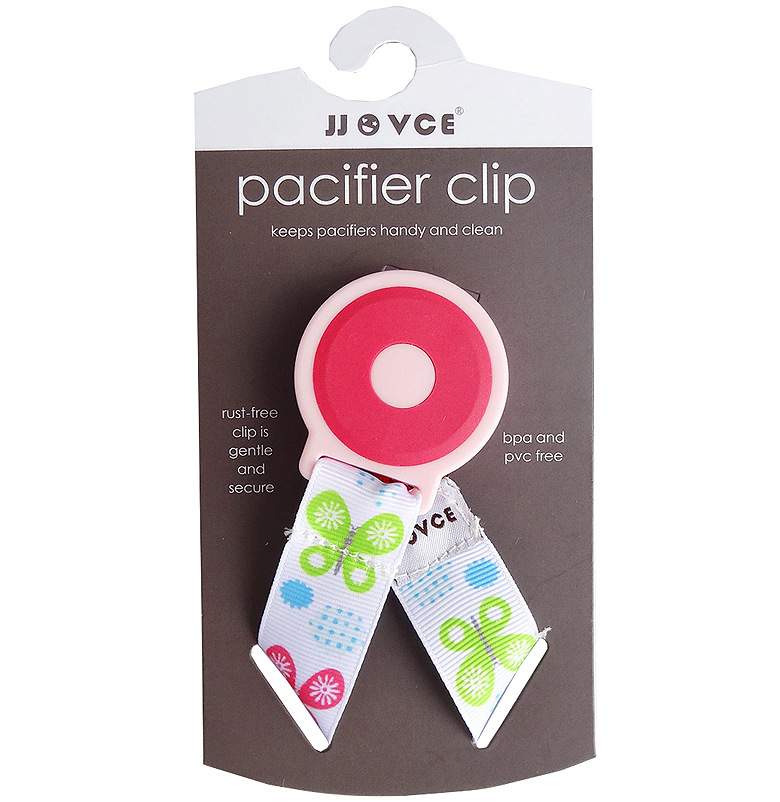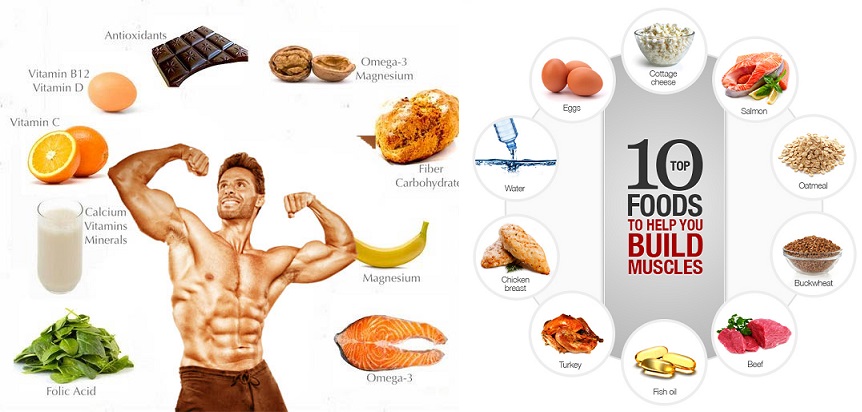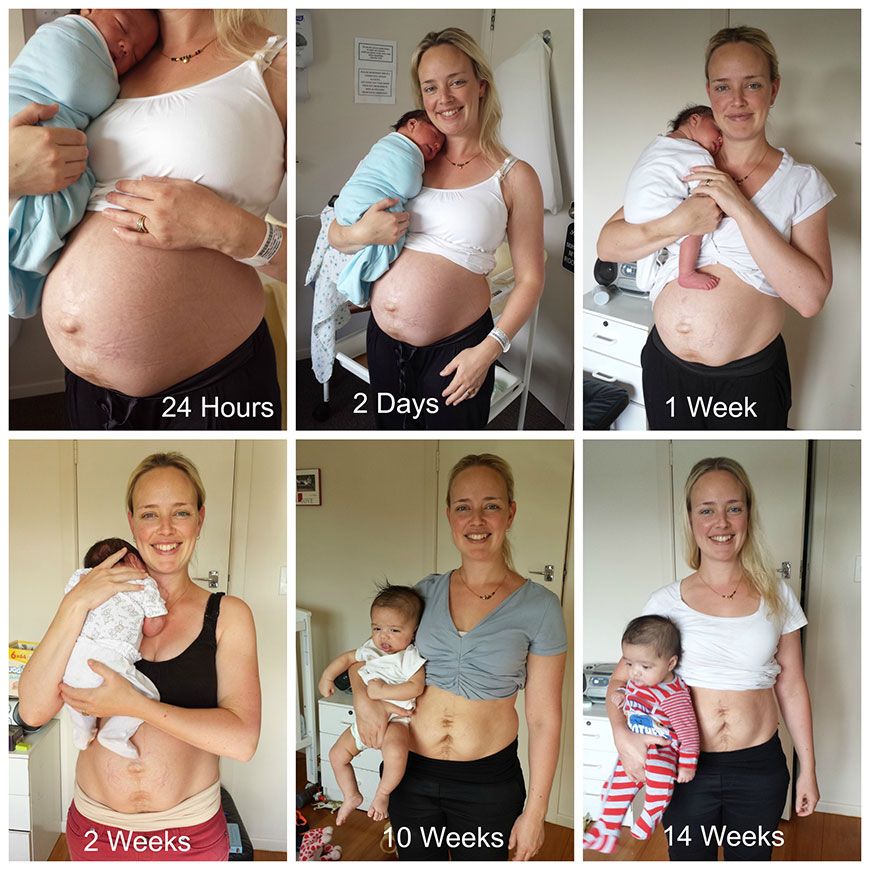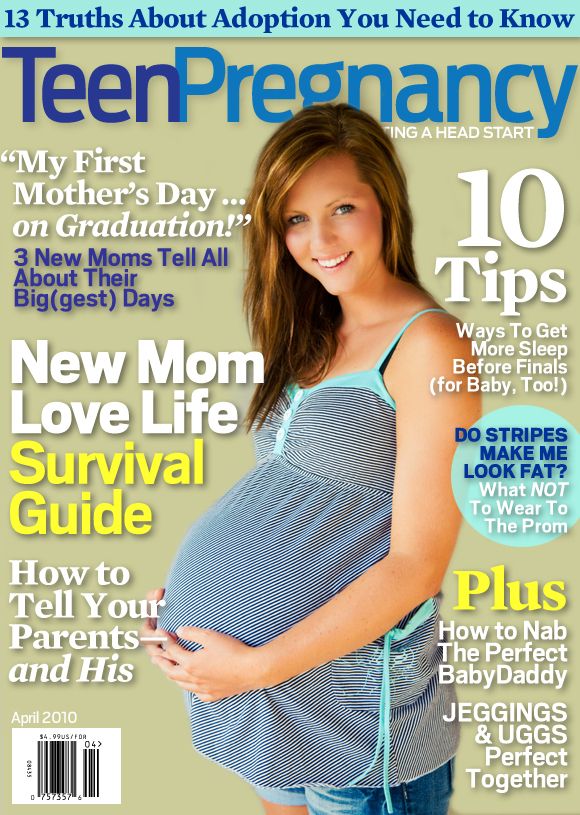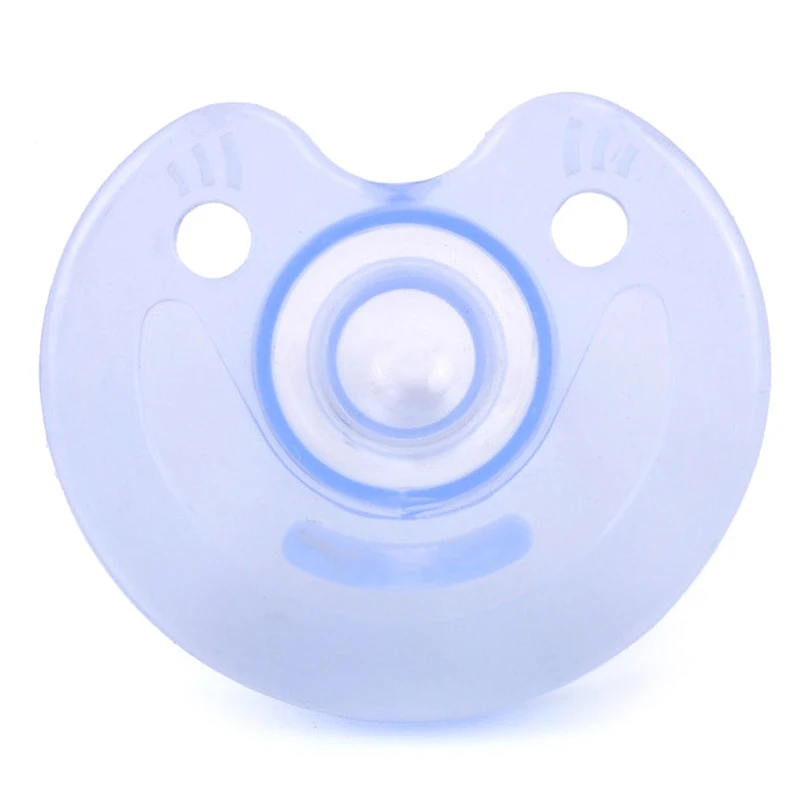Dummy or pacifier
Pacifier, Dummy or Soother—Yes or No?
Pacifiers, also known as dummies or soothers, are often used to calm, pacify or soothe a fussy baby. Babies love to suck for comfort and security, as well as nutrition and a pacifier provides a bottle-fed baby with a substitute to frequent comfort sucking at the mother’s breast. But what about a breastfed baby? Does a breastfed baby need a dummy? Is it OK to use a dummy or pacifier when you’re breastfeeding? This article looks at the pros and cons of using a pacifier or dummy with a breastfed baby and answers frequently asked questions.
Find an IBCLC
Search for a breastfeeding expert near you
What is a pacifier?
A pacifier, dummy or soother comprises a teat shaped piece of soft silicone or latex attached to a flat piece of plastic. The baby holds the silicone teat between their lips and it rests on the front part of their tongue giving them something to suck.
Can a pacifier affect breastfeeding?
A pacifier may not affect breastfeeding, particularly if breastfeeding is well established before it is introduced. Sometimes however using a pacifier can affect the way a baby attaches to the breast (latches) or how often they breastfeed which can affect a mother’s milk supply and baby’s weight gain. Ten things to consider include:
#1 Missed hunger cues
Sucking fingers or fists, searching for the breast with a wide open mouth, starting to fuss and crying are how a baby signals they want food. These signals are known as hunger cues. Using a pacifier can cause a baby’s hunger cues to be missed because any kind of sucking, including non-nutritive sucking, can pacify or quieten a baby. If a mother uses a dummy to comfort her baby between feeds because she thinks he can’t possibly be hungry yet, this will prevent her baby feeding on demand and regulating their intake of milk.
Breast milk can be digested within an hour
Babies can be hungry very quickly again after a breastfeed, they only have small tummies and breast milk can be digested within an hour.1 We also don’t know how much milk any individual breast might store and this dictates how often baby may need to feed. Babies are trying to double their weight in a few months and their rapidly developing brains need energy (i.e. lots of breast milk) to grow. Missing cues or pacifying hunger cues with a dummy—because a parent thinks an arbitrary time should pass between feeds—can affect weight gain and milk supply.
Hunger cues may be missed#2 Baby’s latch could be affected
A baby’s mouth position and tongue action when sucking on the small firm teat of a dummy is quite different to the wide open mouth position desired on a soft breast. When a baby breastfeeds, or even when a baby takes the right shaped bottle teat, the nipple or teat lands deep in the baby’s mouth and their mouth is propped wide open. With a dummy, the mouth is relatively closed and the teat is further forward in the mouth.
Nipple confusion
Although some babies will switch between a breast and a pacifier without problems, the difference in sucking action may cause some babies to take the breast with a shallow latch (sucking mostly on the nipple).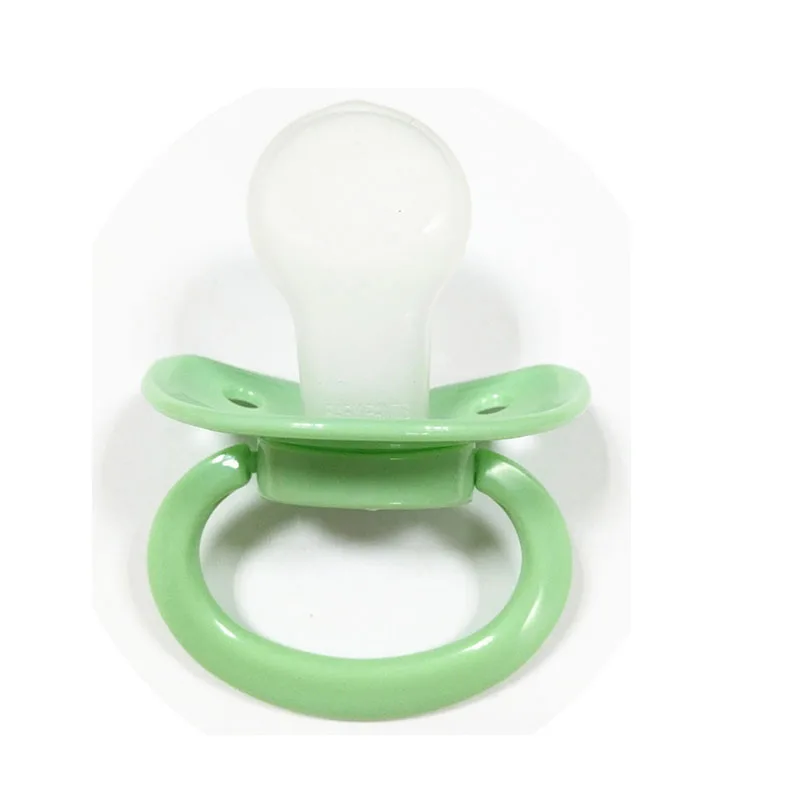 This is sometimes called nipple confusion—confusion between the different feel, shape and sucking action of the breast and an artificial teat. If a baby is latched to the nipple without a big mouthful of breast this will usually be painful, and baby will struggle to get a good flow of milk. A baby may begin to fuss at the breast, refuse to breastfeed or pull at the nipple in frustration.
This is sometimes called nipple confusion—confusion between the different feel, shape and sucking action of the breast and an artificial teat. If a baby is latched to the nipple without a big mouthful of breast this will usually be painful, and baby will struggle to get a good flow of milk. A baby may begin to fuss at the breast, refuse to breastfeed or pull at the nipple in frustration.
#3 Low milk supply
By virtue of #1 (delaying feeds) and #2 (affecting the latch) another possible drawback with using a pacifier is that a mother’s milk supply might drop. Being in a shallow latch or having infrequent feeds mean the breasts are drained less well and less often. If milk is not taken regularly and effectively from the breast, milk production slows down.
Exceptions to the rule
If a mother only uses a dummy occasionally or when her baby falls asleep without missing feeding cues it may not affect milk supply. And for mothers who have a true oversupply, careful use of a dummy may settle a baby who wants to fall asleep sucking but doesn’t want another helping of milk straight away.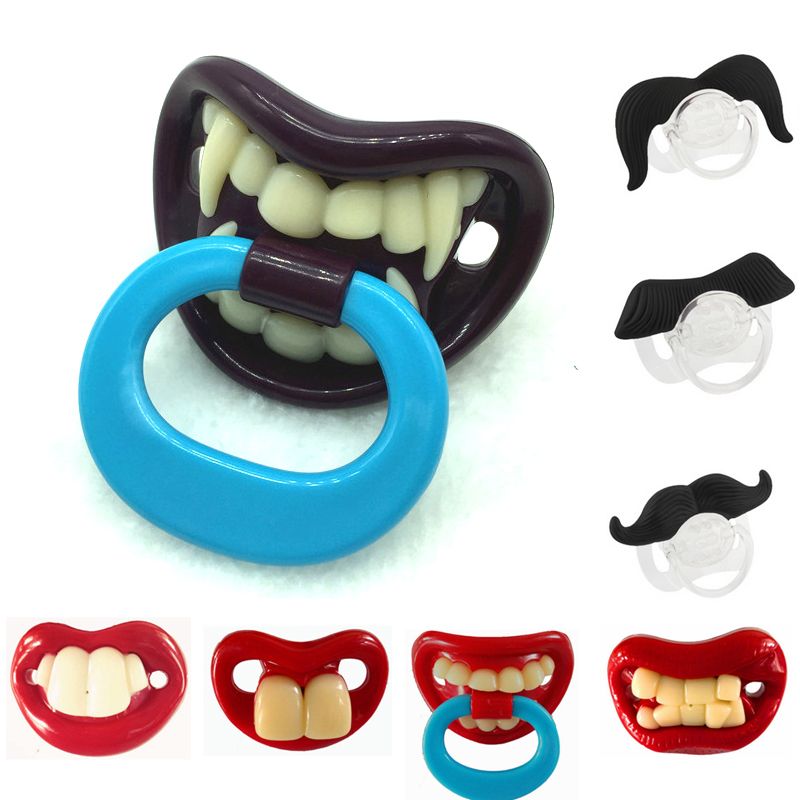 Alternative options in this situation are to put baby back to the least full breast, or let baby suck on a clean finger.2
Alternative options in this situation are to put baby back to the least full breast, or let baby suck on a clean finger.2
#4 Breastfeeding may end earlier
Using a dummy can be associated with a shorter duration of breastfeeding particularly if the mother is experiencing breastfeeding problems anyway and this will have health disadvantages for mother and baby.345
Pacifiers and problems, which came first?
Whether pacifiers cause breastfeeding problems or whether pacifiers are used because of breastfeeding difficulties isn’t always clear.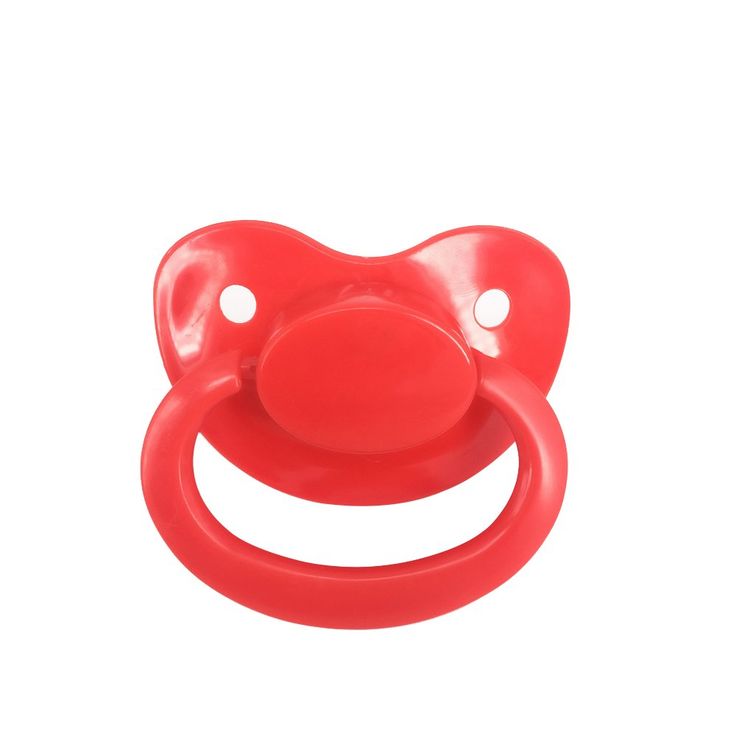 One review suggested using a pacifier did not significantly affect breastfeeding duration in babies up to four months of age for mothers who were very motivated to breastfeed.6
One review suggested using a pacifier did not significantly affect breastfeeding duration in babies up to four months of age for mothers who were very motivated to breastfeed.6
#5 Emotional attachment to the dummy
As with any comfort object such as a cuddly toy or favourite blanket, a baby may become overly attached to a pacifier as their main comforter when used long term. The long term health implications of turning to a dummy or other inanimate object instead of a mother’s arms and breast are unclear. AskDrSears explains:
Excerpt from
Giving Pacifiers, AskDrSears, 2018
…there’s nothing wrong with being a human pacifier. You want your baby to learn to seek comfort from people, not plastic. Your baby’s need to suck for comfort will diminish with time. Meanwhile, enjoy cuddling with your baby at your breast.
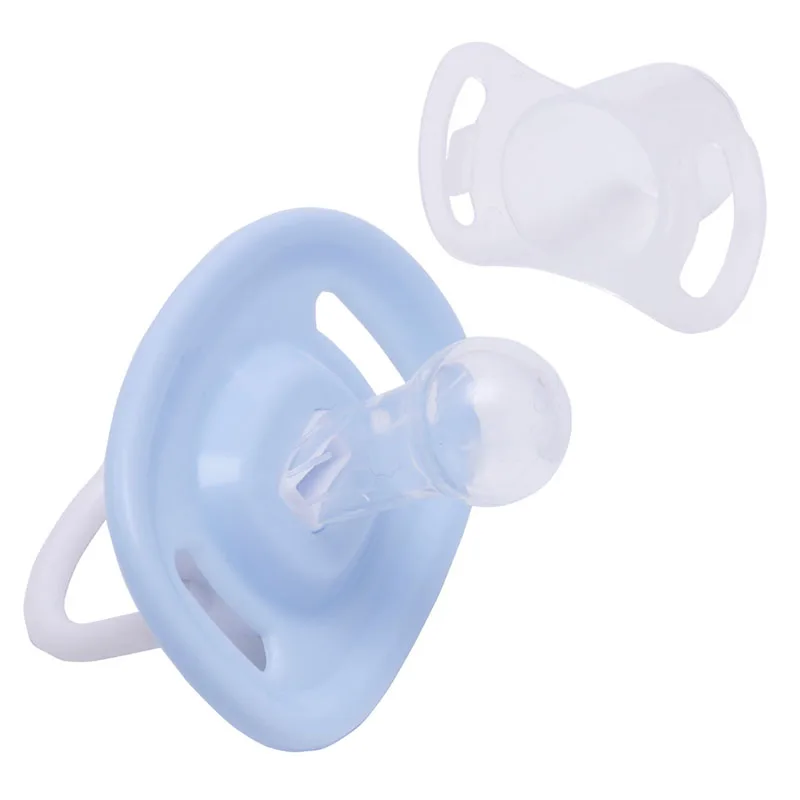
#6 Increased risk of infections
Pacifier use is associated with oral thrush, recurring ear infections, stomach, intestinal and respiratory tract infections.78910 Always clean pacifiers regularly and refer to manufacturer’s guidelines for cleaning instructions.
#7 Tooth alignment and mouth development
Pacifiers can affect the way baby teeth grow and influence the shape and development of the mouth, teeth and jaws.11 Excessive use of bottle teats and pacifiers could affect airway development and be associated with snoring and sleep apnoea.12
#8 Higher risk of tooth decay
Pacifiers and bottle-fed sweet milk drinks are associated with tooth decay and higher levels of Strep mutans and other decay-related micro-organisms in the mouths of children.13 Parents sucking the baby’s dummy to “clean it” could contribute to sharing undesirable bacteria.14
#9 Language development may be delayed
As baby grows, a dummy constantly held in his mouth could interrupt opportunities to start babbling and articulating words leading to delays in language development.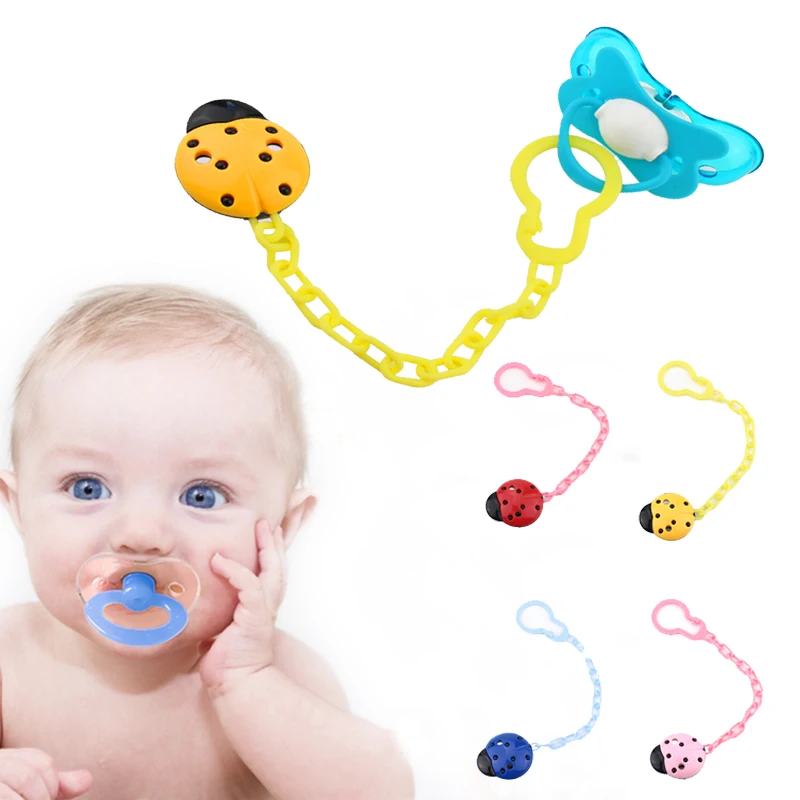
#10 Early return of fertility
If breastfeeds are being delayed, this can affect the contraceptive effect of breastfeeding and a mother’s fertility may return sooner. See Can You Get Pregnant While Breastfeeding?
Frequently asked questions
Do breastfed babies need a pacifier?
A dummy is a substitute for the breast so most breastfed babies fed on demand are unlikely to need a dummy. Canadian paediatrician, Jack Newman explains:
Excerpt from
Dr. Jack Newman’s Guide to Breastfeeding, Jack Newman and Teresa Pitman, 2014
…if the baby is breastfeeding well, there is no need for pacifiers; having the baby satisfy his sucking needs at the breast helps to establish a good milk supply. If the baby is not satisfied at the breast, the mother needs help to make the breastfeeding work better; the baby does not need a pacifier. And if the baby is breastfeeding poorly, pacifiers often make the problem worse.
What if I have a fussy baby?
If a baby seems fussy and unsettled, parents may be tempted to introduce a pacifier to settle them.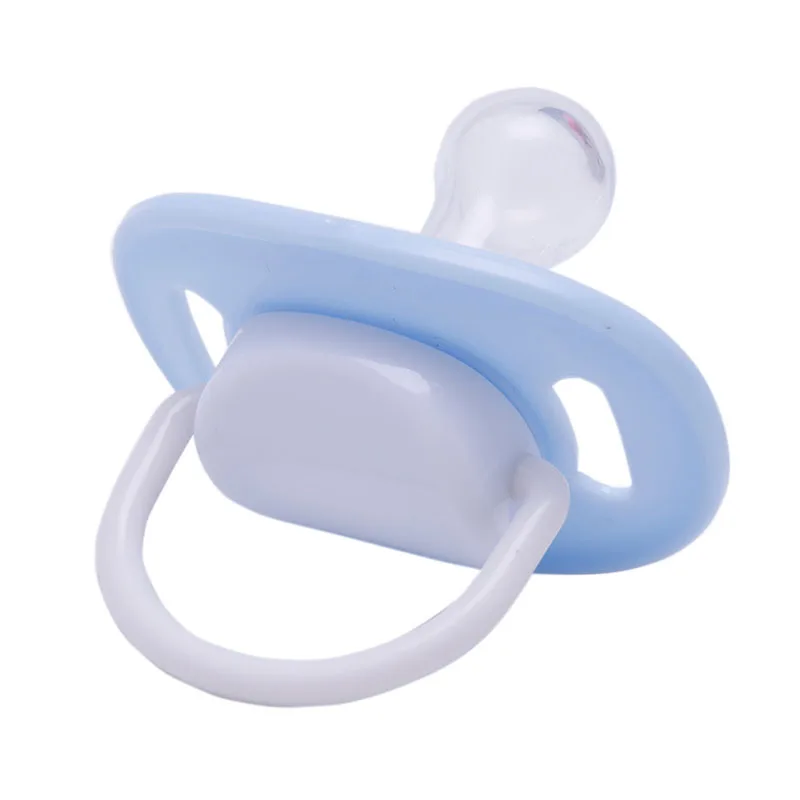 It’s important to try and establish the reason for the fussing first, and rule out hunger as a cause. See The Fussy Breastfed Baby and check in with a breastfeeding specialist.
It’s important to try and establish the reason for the fussing first, and rule out hunger as a cause. See The Fussy Breastfed Baby and check in with a breastfeeding specialist.
Are there times when a pacifier is helpful?
Although pacifiers may cause breastfeeding difficulties for some babies, a pacifier might be useful in the following situations:
Pain relief
Sucking can be a form of pain relief and if a breast isn’t available a pacifier can help provide pain relief through procedures such as blood tests1516 or comfort babies who are upset or have tummy ache. The American Academy of Pediatrics states:
Excerpt from
Breastfeeding and the Use of Human Milk, American Academy of Pediatrics, 2012
Given the documentation that early use of pacifiers may be associated with less successful breastfeeding, pacifier use in the neonatal period should be limited to specific medical situations.
These include uses for pain relief, as a calming agent, or as part of structured program for enhancing oral motor function.
Premature babies
For those premature or poorly babies who are temporarily unable to breastfeed, sucking on a pacifier may have some advantages:
- Sucking on a pacifier during tube feeding may stimulate the sucking reflex and help with digestion of food 17
- Sucking on a pacifier may provide comfort to premature babies who are receiving treatments18
- During Continuous Positive Airway Pressure (CPAP), a treatment to support premature babies breathing, a dummy can help to keep a baby’s mouth closed and to maintain pressure in their airways (Lullaby Trust, 2016)
Do dummies protect against Sudden Infant Death Syndrome (SIDS)?
The World Health Organisation promotes exclusive breastfeeding without bottles, teats or pacifiers19 but some studies have found that giving a baby a pacifier to fall asleep seems to be protective against the risk of sudden infant death syndrome (SIDS).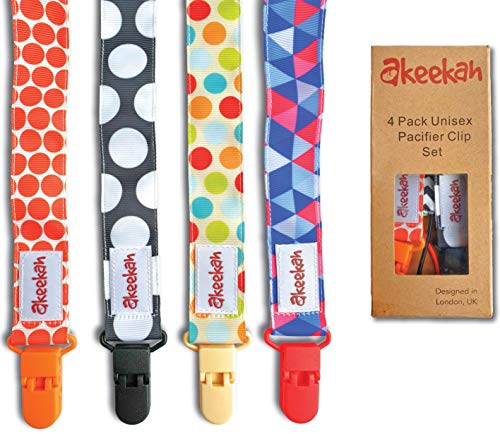 Such studies need to be weighed against the fact that pacifiers can undermine breastfeeding which is itself protective against SIDS. A breastfed baby may not want or need a pacifier because sucking a dummy to fall asleep mimics breastfeeding to sleep 20. BASIS—Baby Sleep Information Source provides comprehensive discussions on this topic for health professionals 21 or parents22.
Such studies need to be weighed against the fact that pacifiers can undermine breastfeeding which is itself protective against SIDS. A breastfed baby may not want or need a pacifier because sucking a dummy to fall asleep mimics breastfeeding to sleep 20. BASIS—Baby Sleep Information Source provides comprehensive discussions on this topic for health professionals 21 or parents22.
Who says what?
The UK’s National Health Service (NHS) says the evidence for dummies protecting against SIDS is not strong:
Excerpt from
Reduce the risk of sudden infant death syndrome (SIDS), NHS, 2021
Breastfeeding your baby reduces the risk of SIDS.
It’s possible using a dummy at the start of a sleep also reduces the risk of SIDS.But the evidence is not strong and not all experts agree that dummies should be promoted.
If you do use a dummy, do not start until breastfeeding is well established. This is usually when your baby is around 1 month old.
Stop giving them the dummy when they’re between 6 and 12 months old.
The Lullaby Trust recommends:
Excerpt from
Dummies/Pacifiers, Safer Sleep for Babies Fact sheet 7 [no date, accessed 22 June 2022]
- If you choose to use a dummy, wait until breastfeeding is well established, which can take a few weeks.
- Stop giving a dummy to your baby between 6 and 12 months
- If you use a dummy, make sure to offer it to your baby for every day and night-time sleep
- Don’t force your baby to take a dummy or put it back in if your baby spits it out.
The American Academy of Pediatrics23 advocates for using a pacifier at nap or sleep time after breastfeeding is well established. However the authors of Sweet Sleep feel such a general recommendation for all babies is not backed up by research:
Excerpt from
Sweet Sleep: Nighttime and Naptime Strategies for the Breastfeeding Family*, LLLI, 2014
Here’s what the studies actually found: some babies who routinely use dummies and sleep separately seem to be at greater risk of dying on a night when there’s no dummy available and they’re sleeping separately.
For a vulnerable baby who is used to soothing and stimulating himself by sucking, being without a dummy might be stressful and even interfere with arousal. But it doesn’t make sense to apply the results of these dummy studies to babies who don’t use them, or who breastfeed off and on throughout the night while bedsharing.
no research has shown that offering a dummy to all babies is safe and effective just because some babies who sleep alone may be helped by them.
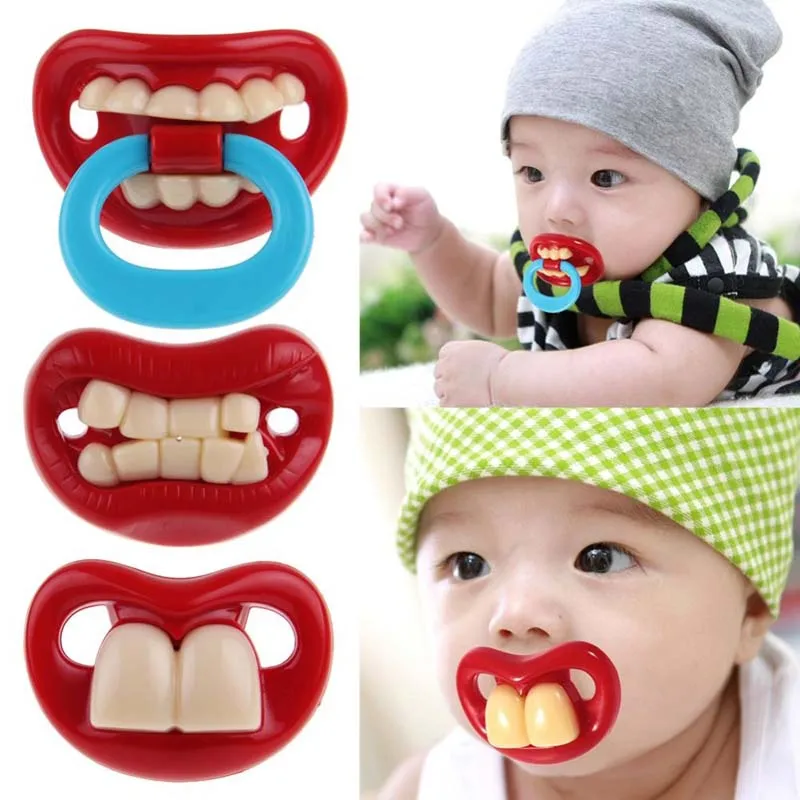
Tips for using a pacifier
If you decide to use a pacifier:
- Wait until breastfeeding is well established and use only for falling asleep.24
- Consider offering a breastfeed before offering a dummy to avoid missing feeding cues.
- If you notice sore nipples or a shallow latch after introducing a pacifier, consider returning to exclusive breastfeeding for a while paying careful attention to latch and position.
- Be aware a pacifier could contribute to low milk supply, see our tips for increasing milk supply. Using both breasts per feed, breast compressions and frequent feeds can all increase milk supply.
- If your baby starts refusing to breastfeed see our tips to get baby back to breast and the value of skin-to-skin contact.
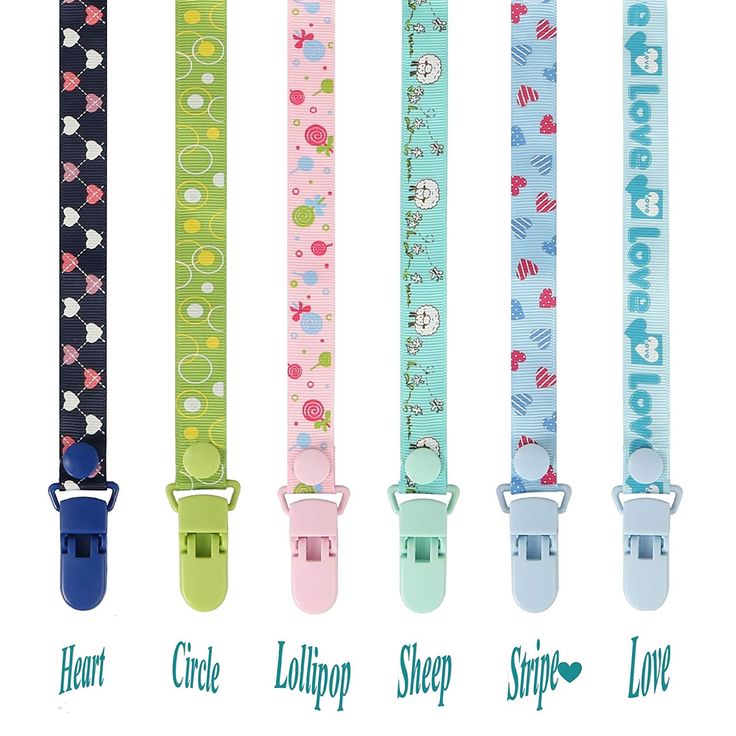
- If your baby has constant ear infections or thrush, bear in mind the pacifier may be a cause (BASIS, 2022).
- Don’t attach a neck cord onto the pacifier (Lullaby Trust, 2022).
How can I phase out a pacifier?
If you do use a pacifier for your baby to fall asleep, the recommendations are to phase this out after 6-12 months (Lullaby Trust, 2016). Offering more breastfeeds, giving lots of extra attention and letting your baby breastfeed to sleep can help. And see Baby Waking Up at Night for ideas for baby to learn new sleep associations.
What is the best pacifier for a breastfed baby?
The breast is the best pacifier. A dummy is a replacement for a breast. Most manufactured pacifiers are very similar and I don’t currently have any information on designs that might be “better” for a breastfed baby.
Summary
Some breastfed babies will manage to switch between sucking a pacifier (dummy or soother) and a breast without any problems but breastfeeding may be affected for some babies. Sucking a pacifier requires a different tongue and jaw action to breastfeeding and it can affect the way some babies latch—making breastfeeding painful and ultimately lowering milk supply. Mothers may miss feeding cues if they use a dummy. Studies link pacifiers with a shorter overall duration of breastfeeding, tooth decay, poor teeth alignment and increased risk of infections. Some studies have found that having a pacifier to fall asleep can be protective against SIDS for some babies. A pacifier is a replacement for a breast and a breastfed baby may not want or need one.
Sucking a pacifier requires a different tongue and jaw action to breastfeeding and it can affect the way some babies latch—making breastfeeding painful and ultimately lowering milk supply. Mothers may miss feeding cues if they use a dummy. Studies link pacifiers with a shorter overall duration of breastfeeding, tooth decay, poor teeth alignment and increased risk of infections. Some studies have found that having a pacifier to fall asleep can be protective against SIDS for some babies. A pacifier is a replacement for a breast and a breastfed baby may not want or need one.
* Excerpt reproduced with permission from Pinter & Martin
Footnotes & References
-
Bergman, Neonatal Stomach Volume and Physiology Suggest Feeding at 1-h Intervals, Acta Paediatr. 2013
-
Dr Jack Newman’s Guide to Breastfeeding, Jack Newman and Teresa Pitman, 2014
-
Callaghan A et al, Association between pacifier use and breast-feeding, sudden infant death syndrome, infection and dental malocclusion, Int J Evid Based Health, 2005
-
Righard, L and Alade, M.
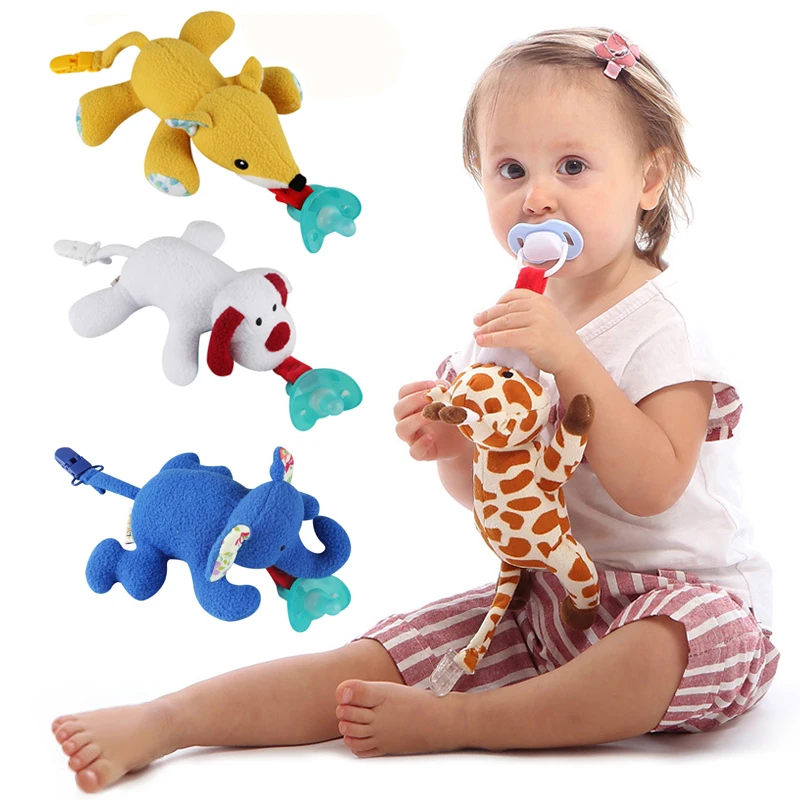 Breastfeeding and the use of pacifiers. Birth, 1997
Breastfeeding and the use of pacifiers. Birth, 1997 -
Victoria, C et al. Pacifier use and short breastfeeding duration. Cause, Consequence or Coincidence. Pediatrics, 1997
-
Jaafar et al. Effect of restricted pacifier use in breastfeeding term infants for increasing duration of breastfeeding. Cochrane Database 2016.
-
Mattos-Graner RO et al., Relation of oral yeast infection in Brazilian infants and use of a pacifier, 2001
-
Warren, JJ et al., Pacifier Use and the Occurrence of Otitis Media in the First Year of Life. Pediatric Dentistry, 2001
-
Comina et al, Pacifiers: a Microbial Reservoir, Nurs Health Sci, 2006
-
Lubianca et al. Systematic Literature Review of Modifiable Risk Factors for Recurrent Acute Otitis Media in Childhood, J Pediatr (Rio J), 2006
-
Viggiano, D, et al.
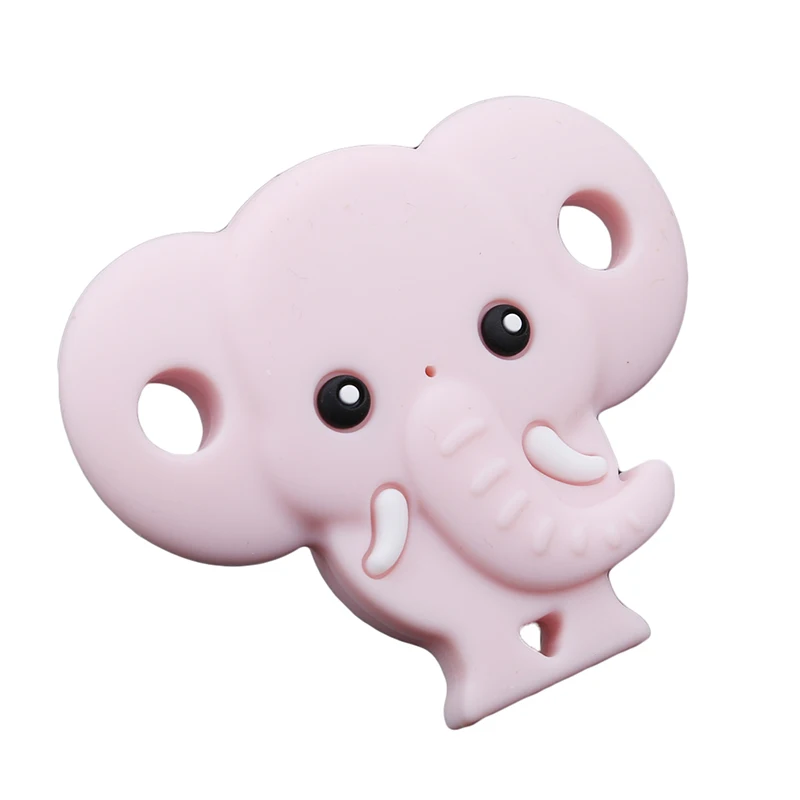 Breastfeeding, bottlefeeding, and non-nutritive sucking: Effects on occlusion in deciduous dentition. Arch Dis Child 2005
Breastfeeding, bottlefeeding, and non-nutritive sucking: Effects on occlusion in deciduous dentition. Arch Dis Child 2005 -
Palmer, B. Breastfeeding: Reducing the Risk for Obstructive Sleep Apnea. Breastfeeding Abstracts. 1999
-
Ersin NK et al., Association of maternal-child characteristics as a factor in early childhood caries and salivary bacterial counts, 2006
-
Drop Those Pacifiers! American Dental Association, 2013
-
Stevens B et al., Sucrose for analgesia in newborn infants undergoing painful procedures, 2004
-
Carbajal R et al., Analgesic effect of breast feeding in term neonates: randomised controlled trial, 2003
-
Breastfeeding, Dummies and SIDS, La Leche League GB, 2018
-
Safer Sleep for Babies Fact sheet 7 Dummies/Pacifiers.
 Lullaby Trust. 2016 [accessed 22 June 2022]
Lullaby Trust. 2016 [accessed 22 June 2022] -
Exclusive Breastfeeding, World Health Organisation, 2018
-
Breastfeeding, Dummies and SIDS, LLLGB, 2018
-
Dummies, Baby Sleep Information Source. [accessed 22 June 2022]
-
Dummies, BASIS—Baby Sleep Information Source [accessed 22 June 2022]
-
Moon et al. Sleep-Related Infant Deaths: Updated 2022 Recommendations for Reducing Infant Deaths in the Sleep Environment. AAP. 2022.
-
Hauck, et al, Do Pacifiers Reduce the Risk of Sudden Infant Death Syndrome? A Meta-analysis, Pediatrics, 2005
Dummies and soothers - BabyCentre UK
In this article
- What sort of dummy or soother is best?
- When could I start giving my baby a dummy?
- Will using a dummy interfere with breastfeeding?
- What are the advantages of using a dummy?
- What are the disadvantages of using a dummy?
- Will using a dummy help prevent SIDS?
- I've decided I do want to use a dummy.
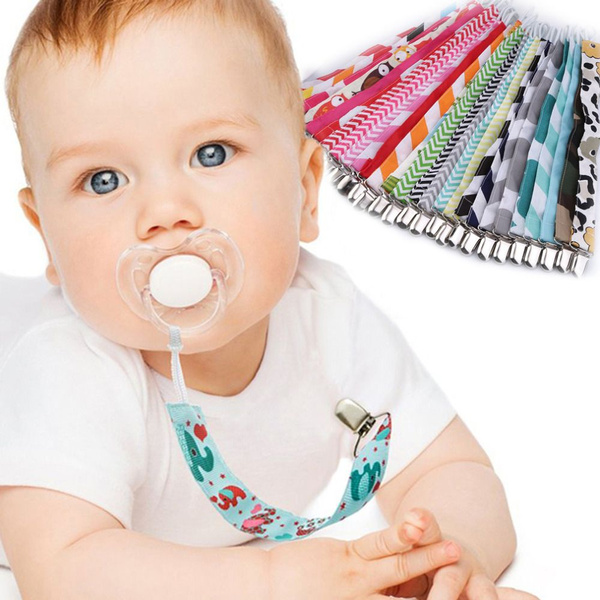 What else do I need to know?
What else do I need to know?
Love them or hate them, parents have used dummies, soothers, comforters, or pacifiers for centuries. As the names suggest, parents use them to calm and settle babies and, sometimes, toddlers too.
Babies are soothed by the action of sucking. You may find your baby needs to suck on something for comfort when he's awake and not feeding. As he gets older and finds other ways to soothe himself, he’ll need to do this less (Borrie et al 2015).
Some parents couldn't get through the day without giving their baby a dummy, whereas other parents strongly disapprove of their use. You may decide you definitely won't use one, but change your mind when faced with your crying baby (Joyner et al 2017, NHS 2016).
What sort of dummy or soother is best?
It may be a question of trial and error before you find a dummy that your baby will accept. Some babies refuse to take a dummy at all (Joyner et al 2017).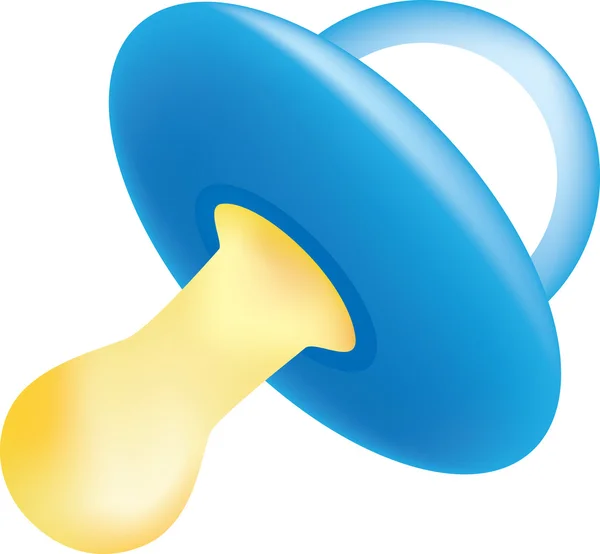
Most dummies come with a silicone or rubber teat, and a plastic or silicone mouth shield and handle. The mouth shield prevents your baby from choking on, or swallowing, the teat. Some brands are all one piece, so there are no joins or cracks that could come apart or harbour germs.
Latex or rubber dummies are softer and more flexible than silicone, but they don't last as long. Silicone dummies may be easier to keep free from germs than latex dummies (Sexton and Natale 2009).
Orthodontic dummies are flatter than traditional cherry-shaped dummies. They're shaped to encourage your baby to suck in the same way as when he's breastfeeding. Orthodontic dummies are thought to have less of an effect on how your baby's first teeth develop (OHF nd).
When could I start giving my baby a dummy?
The official advice if you're breastfeeding is to wait until breastfeeding is established and your baby is gaining weight well.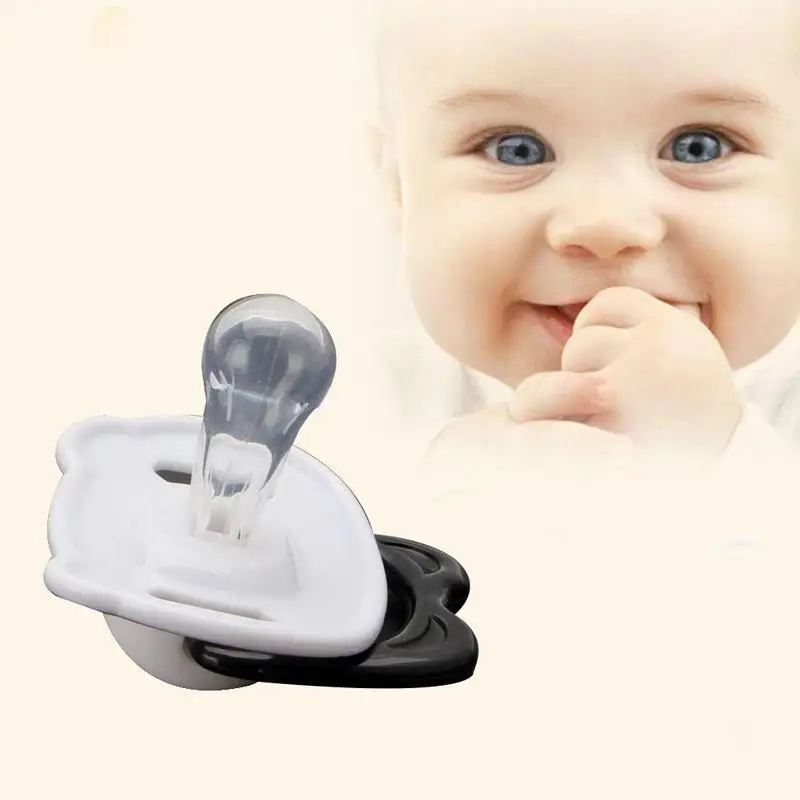 This is usually when your baby is about four weeks old (LLLGB nd, The Lullaby Trust 2016).
This is usually when your baby is about four weeks old (LLLGB nd, The Lullaby Trust 2016).
Then it's really up to you when and if you use a dummy. Many parents use a dummy during the first six months to help settle their baby to sleep at night, and for naps during the day.
Some parents use a dummy in the first six months because they've heard it may help to reduce the risk of sudden infant death syndrome (SIDS) (The Lullaby Trust 2016, Joyner et al 2017). It's unclear exactly how a dummy helps reduce the risk of SIDS, and experts are still divided on the issue, so more research is needed to be sure (NHS 2015, Psaila et al 2017).
It's best if you try to wean your baby off his dummy when he's between six months and 12 months old (The Lullaby Trust 2016). There are disadvantages to letting him have a dummy for longer (see below).
When should we ditch the dummy?
When and how should you wean your baby off his dummy? An expert health visitor reveals her top tips.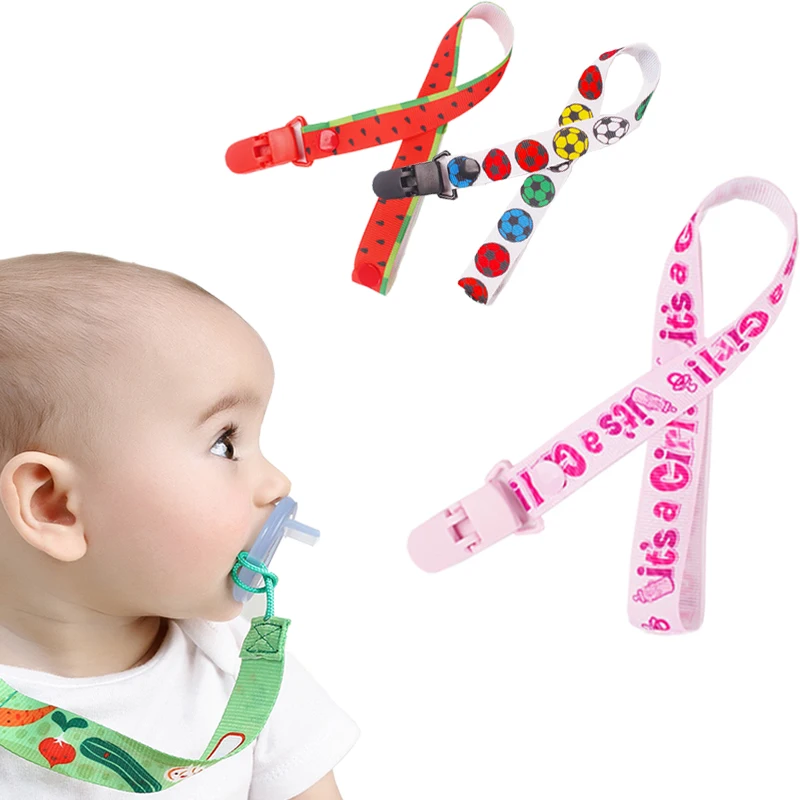 More baby videos
More baby videos
Will using a dummy interfere with breastfeeding?
It may do for some mums and babies. Official guidance is that it's best not to give your baby a dummy until you've established breastfeeding, which is usually by the time your baby is about a month old (The Lullaby Trust 2016). Waiting until then means your body has time to establish and maintain your milk supply (LLLGB nd).
Establishing breastfeeding first helps your baby get fully used to latching on and sucking your breast, which can sometimes take a few weeks (The Lullaby Trust 2016).
Dummy use itself may not cause breastfeeding problems. But if you are already struggling with breastfeeding, you may find that you rely more on a dummy (Sexton and Natale 2009).
What are the advantages of using a dummy?
A dummy may soothe your baby or help him settle to sleep (Joyner et al 2017, Lubbe and ten Ham-Baloyi 2017).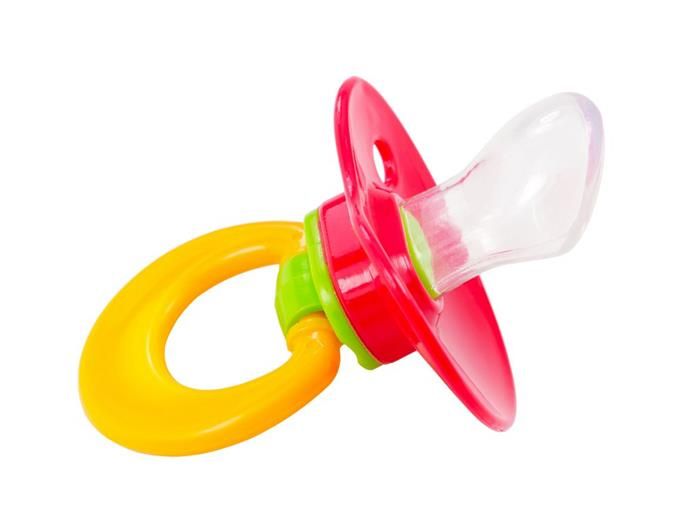
The act of sucking can relieve pain (Lubbe and ten Ham-Baloyi 2017, Sexton and Natale 2009). For example, it may help your baby if you breastfeed him, or if he sucks on a dummy when he's having his immunisations (Lubbe and ten Ham-Baloyi 2017).
A dummy may help if your baby is premature. If he's given a dummy to suck on before feeds, he may adapt more quickly from tube-feeding to bottle-feeding (Lubbe and ten Ham-Baloyi 2017). He may also be calmer and settle more easily before and after his feeds.
Premature babies who are given a dummy also tend to have shorter hospital stays than babies who aren’t given one (Sexton and Natale 2009).
Finally, a recent study has suggested that using a dummy or soother may help mums with postnatal depression to continue breastfeeding for longer (Sipsma et al 2017).
What are the disadvantages of using a dummy?
Using a dummy for long periods may mean that your baby suffers more frequently from middle ear infections (Lubbe and ten Ham-Baloyi 2017, Sexton and Natale 2009):
- Sucking may channel bacteria from your baby's mouth into the narrow tubes between his ears and throat (Eustachian tubes).

- If your baby uses a dummy a lot, it may affect the structure of his mouth, which may mean mucus doesn’t drain as well along his Eustachian tubes (Lubbe and ten Ham-Baloyi 2017).
Limiting the amount of time your baby uses his dummy will guard against ear problems. If you only let him use it to settle himself to sleep, it can make a big difference to the number of ear infections your baby gets (Sexton and Natale 2009).
The longer your baby uses a dummy, the more likely it is to change the way his teeth grow. This can result in an overbite or crossbite, where the top and bottom teeth don't meet properly (Lubbe and ten Ham-Baloyi 2017). You may notice this if your child uses his dummy beyond two or three years of age (Nelson 2012, Sexton and Natale 2009). The worst effects are usually seen in children who use a dummy for four years or more (Sexton and Natale 2009).
The same goes for thumb-sucking, though. The Oral Health Foundation recommends parents try to avoid the use of dummies and discourage their baby from sucking his thumb if they can (OHF nd).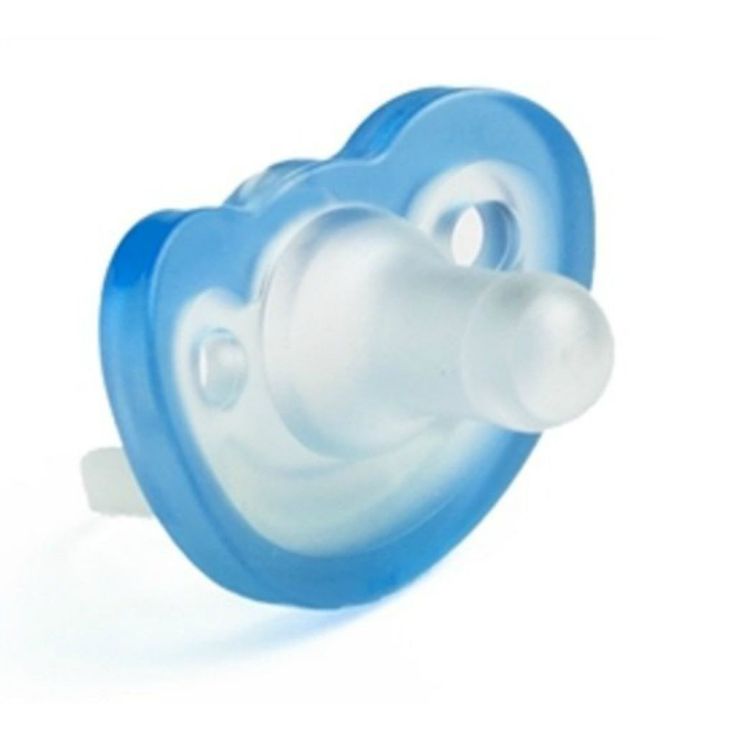
If your little one tends to use a dummy all day, it will be harder for him to try to talk to you or make sounds. Being able to do this is important for his speech development, so it’s a good idea to limit using a dummy to when he's trying to get to sleep, during the day and at night (NHS 2017).
Will using a dummy help prevent SIDS?
Some studies have suggested that using a dummy may help to prevent SIDS, but the evidence for this isn’t strong (NHS 2015, The Lullaby Trust 2016, Psaila et al 2017). If you choose to use a dummy for this reason, make sure you only give it to your baby for naps and night-time sleep, and don't worry if it falls out while your baby is asleep (The Lullaby Trust 2016).
Don't encourage your baby to take a dummy if he doesn't want one (The Lullaby Trust 2016). There are other, proven ways to reduce the risk of SIDS, such as:
- Sleeping in the same room as your baby for the first six months.
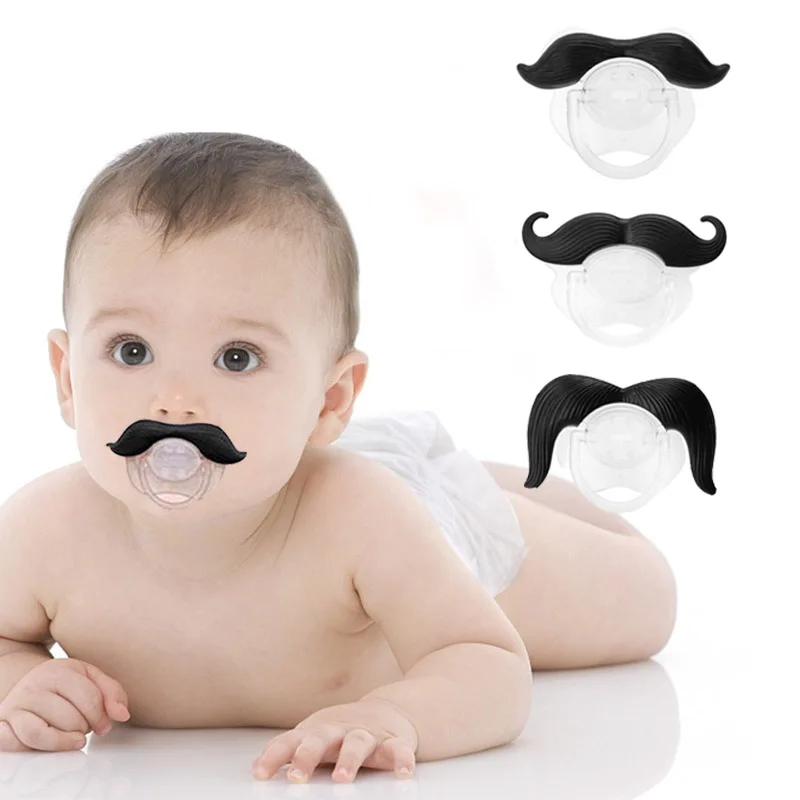
- Making sure your baby doesn’t overheat.
- Putting your baby down to sleep on his back.
- Not smoking anywhere near your baby or in your home.
(The Lullaby Trust 2016)
I've decided I do want to use a dummy. What else do I need to know?
If you’ve decided to give your baby a dummy, here are a few tips:
- Use an orthodontic or flat dummy (OHF nd). There is some evidence that it may be better for your baby's developing mouth than a cherry dummy (Sexton and Natale 2009).
- Never use a string or ribbon to attach a dummy to your baby’s clothing or cot. And never tie a dummy round your baby’s face or neck. Both carry a serious risk of strangulation (The Lullaby Trust 2016).
- Keep the dummy as clean as possible. Sterilise it as you would any other bottle-feeding teat (NHS 2016). Silicone dummies (Sexton and Natale 2009), or dummies that are all one piece, may be easier to keep free of bugs.
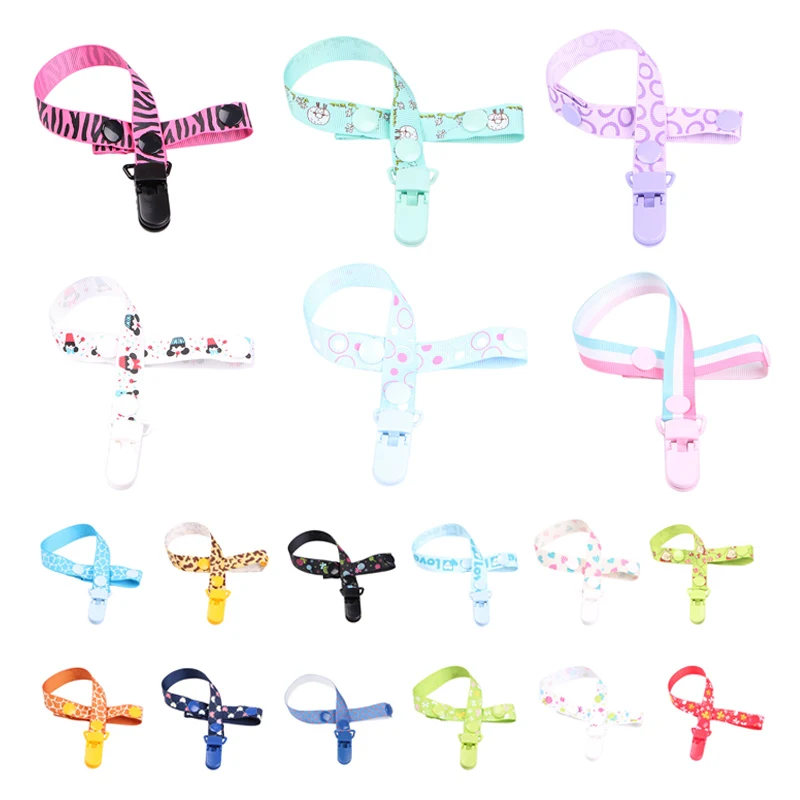
- Check dummies regularly. Cracks, splits and holes can trap germs. If you find any problems, buy a new dummy straight away and throw away the damaged dummy (Sexton and Natale 2009).
- Never dip the dummy in sweet foods. Don't coat your baby's dummy in foods such as honey or juice to stop him crying (NHS 2016, OHF nd). Honey can harm your baby, and sticky, sweet food and drink can cause tooth decay.
- Wean your baby off his dummy between six months and 12 months (The Lullaby Trust 2016). It will be easier to do it then, than when he's older. To avoid your baby developing an overbite or crossbite, it's best to stop before the age of two years old, and definitely before he's four years old (Nelson 2012, Sexton and Natale 2009).
See what our expert has to say about the dummy vs thumb debate, and discover how to wean your baby off his dummy when it's time.
References
Borrie FRP, Bearn DR, Innes NPT et al.![]() 2015. Interventions for the cessation of non-nutritive sucking habits in children. Cochrane Databse Syst Rev (3):CD008694. www.cochranelibrary.com [Accessed May 2018]
2015. Interventions for the cessation of non-nutritive sucking habits in children. Cochrane Databse Syst Rev (3):CD008694. www.cochranelibrary.com [Accessed May 2018]
Joyner BL, Oden RP, Moon RY. 2017. Reasons for pacifier use and non-use in African-Americans: does knowledge of reduced SIDS risk change parents' minds? J Immigr Minor Health 18(2):402-10. Doi: 10.1007/s10903-015-0206-0. [Accessed May 2018]
LLLGB. nd. Dummies and breastfeeding. La Leche League GB. www.laleche.org.uk [Accessed May 2018]
Lubbe W, ten Ham-Baloyi W. 2017. When is the use of pacifiers justifiable in the baby-friendly hospital initiative context? A clinician's guide. BMC Pregnancy Childbirth 17:130. doi 10.1186/s12884-017-1306-8. [Accessed May 2018]
Nelson AM. 2012. A comprehensive review of evidence and current recommendations related to pacifier usage. J Pediatr Nurs 27(6):690-9. [Accessed May 2018]
NHS. 2015. Reduce the risk of sudden infant death syndrome (SIDS).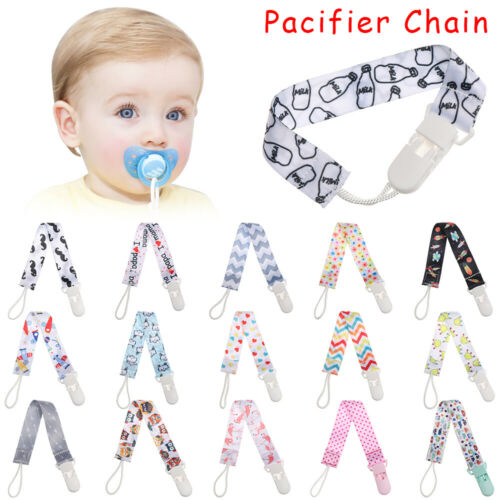 NHS Choices, Health A-Z. www.nhs.uk [Accessed May 2018]
NHS Choices, Health A-Z. www.nhs.uk [Accessed May 2018]
NHS. 2016. Soothing a crying baby. NHS Choices, Health A-Z. www.nhs.uk [Accessed May 2018]
NHS. 2017. Helping your baby learn to talk. NHS Choices, Health A-Z. www.nhs.uk [Accessed May 2018]
OHF. nd. Dental care for mother and baby. Oral Health Foundation. www.dentalhealth.org [Accessed May 2018]
Psaila K, Foster JP, Pulbrook N, et al. 2017. Infant pacifiers for reduction in risk of sudden infant death syndrome. Cochrane Database Syst Rev (4):CD011147. www.cochranelibrary.com [Accessed May 2018]
Sexton S, Natale R. 2009. Risks and benefits of pacifiers. Am Fam Physician 79(8):681-5 [Accessed May 2018]
Sipsma HL, Komfeind K, Kair LR. 2017. Pacifiers and exclusive breastfeeding: does risk for postpartum depression modify the association? J Hum Lact 33(4):692-700. doi.org/10.1177/0890334417725033. [Accessed May 2018]
The Lullaby Trust. 2016.![]() Safer sleep for babies fact sheet 7: dummies / pacifiers. The Lullaby Trust. www.lullabytrust.org.uk. [.pdf, accessed May 2018]
Safer sleep for babies fact sheet 7: dummies / pacifiers. The Lullaby Trust. www.lullabytrust.org.uk. [.pdf, accessed May 2018]
Show references Hide references
90,000 is a dummy for a newborn child Search Support iconKeywords for search for
- Video, Audio, connection
- Personal care
- All for the mother
- Home
- Light
- Health 9000
- Automobile products
- Accessories
- Promotions
Despite its small size, the pacifier plays an important role for the baby - it makes him feel more comfortable. We have compiled this guide to help you understand how a pacifier helps your baby explore the world.
Motherhood is unconditional happiness.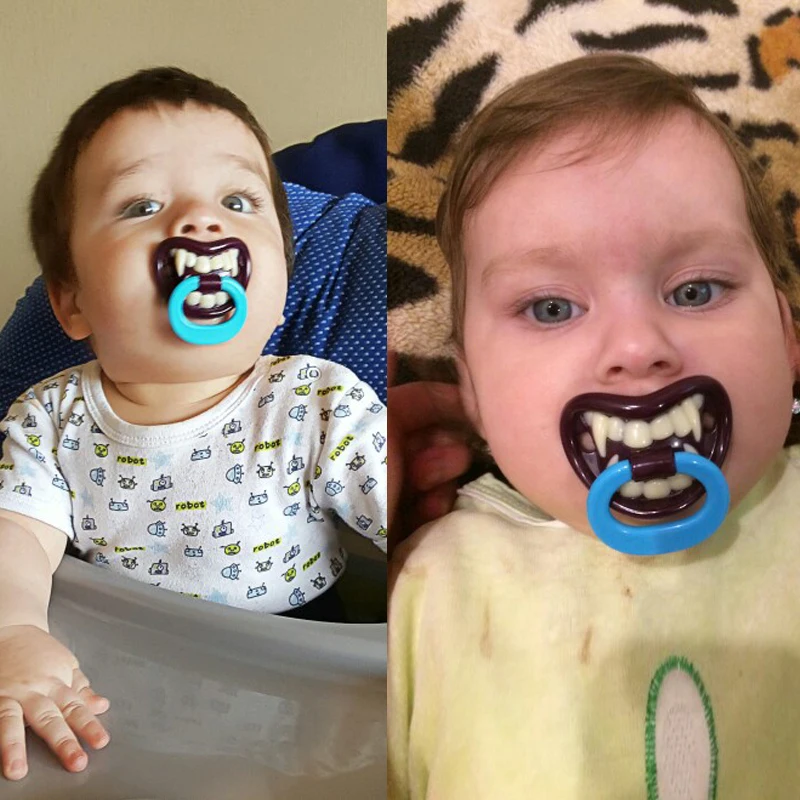 But sometimes situations arise when fatigue builds up, and mothers need a quick and simple remedy that will calm the child. It is such an "assistant" that a dummy is.
But sometimes situations arise when fatigue builds up, and mothers need a quick and simple remedy that will calm the child. It is such an "assistant" that a dummy is.
Favorite Philips Avent pacifiers:
good or bad
But some children's accessories cause a wary attitude of parents. This happened with the dummy, the use of which is shrouded in various myths. Some mothers are categorically against them, explaining this by the fact that the pacifier forms the wrong bite. Others, on the contrary, believe that a pacifier is indispensable, and use it all the time. In our article, we will tell you why a pacifier is useful, how to choose it, and how to naturally wean a child from it as they grow up.
Others, on the contrary, believe that a pacifier is indispensable, and use it all the time. In our article, we will tell you why a pacifier is useful, how to choose it, and how to naturally wean a child from it as they grow up.
How do modern pediatricians respond to the opinion that a pacifier is a harmful accessory? They consider it perfectly safe and even useful in certain situations, but do not advise getting too carried away with it.
Why do I need a pacifier?
Its most important property is the calming effect it has. It is associated with the innate sucking reflex of the child. A newborn is born and already knows how to suck, although no one taught him this. This reflex ensures its survival, because thanks to it it can receive food.
There are two types of suckling: nutritive and non-nutritive. Nutritional sucking is caused by the need to satisfy hunger - the baby sucks to eat. Non-nutritive sucking is sucking associated with the child's psychological need for a sense of security and comfort.
What gives a baby a sucking reflex?
As far as sucking during feeding is concerned, it is clear: it allows the baby to drink milk from a bottle or while breastfeeding.
However, the benefits for the baby are not limited to this. Listed below are the main benefits of the two types of sucking reflexes that you may not have known about before.
Satisfaction
Have you noticed that immediately after feeding the baby begins to fall asleep or that he calms down if you give him a pacifier? This is due to the fact that when sucking, the hormone cholecystokinin (CCK) is produced, thanks to which the baby feels full, calm and ready to go to bed.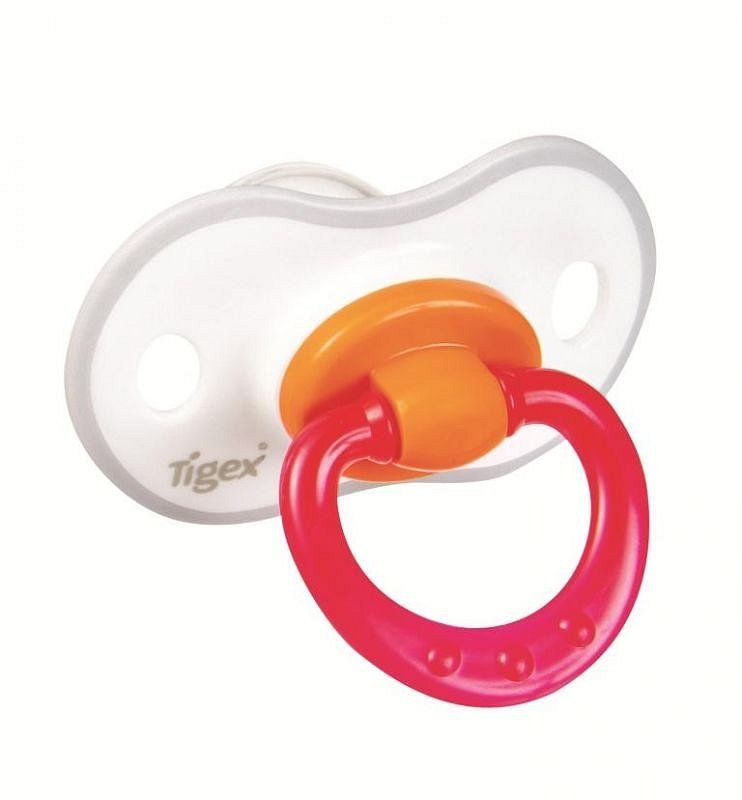
Improved digestion
Another effect of the CCK hormone is to aid in digestion. Breast milk is rich in proteins and fats, and the CCK hormone helps break them down. In addition, sucking improves intestinal motility, and the accumulated gases in the intestines are quickly excreted.
Improvement of coordination
Finally, non -asset sucking helps the baby coordinate movements: sucking, swallowing, breathing. These three steps will help your baby to breastfeed or bottle feed more effectively.
The development of the speech apparatus
Another beneficial effect that the pacifier has on the child is the training of the facial muscles, due to which the speech apparatus develops.
Therefore, in no case should sucking be considered a bad habit. However, in everything you need to adhere to a reasonable “golden mean” and not use a dummy all the time. It should play the role of an auxiliary element, and not the main means of calming.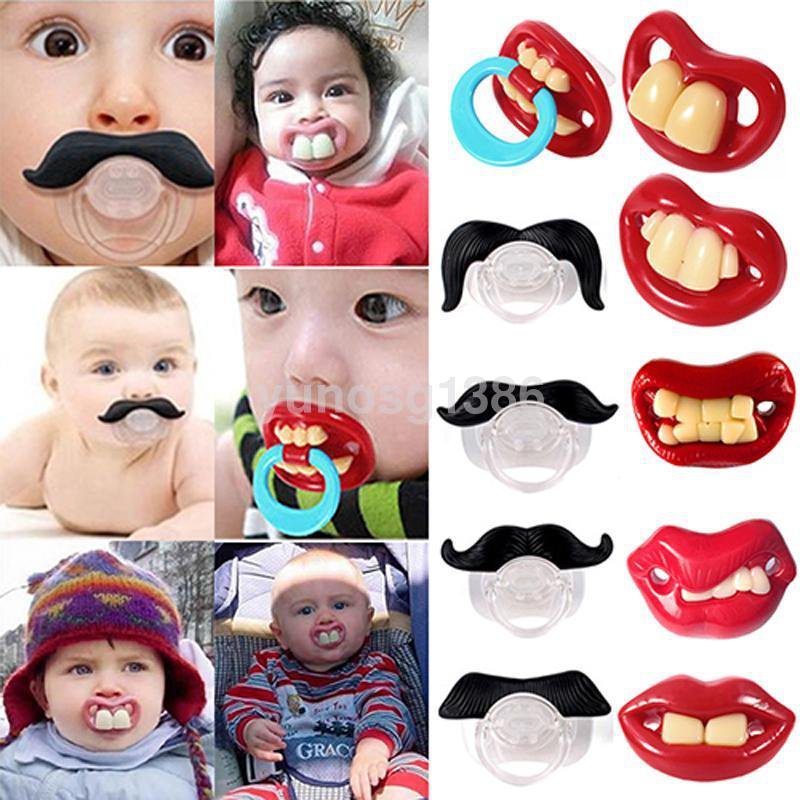 This is especially true for the first month after birth, when a close relationship is established between the child and mother and the process of natural feeding is established. “Interrupting” the natural hunger and the child’s need for the closeness of the mother should not be done with a pacifier. Also, you don't have to use a pacifier every time the baby cries. Crying is the baby's only means of communicating needs that a caring mother won't want to ignore.
This is especially true for the first month after birth, when a close relationship is established between the child and mother and the process of natural feeding is established. “Interrupting” the natural hunger and the child’s need for the closeness of the mother should not be done with a pacifier. Also, you don't have to use a pacifier every time the baby cries. Crying is the baby's only means of communicating needs that a caring mother won't want to ignore.
Now you know how the sucking reflex and the use of a pacifier help your baby develop.![]() Below are some more useful tips.
Below are some more useful tips.
● Does a newborn need a pacifier while breastfeeding? If you are trying to breastfeed your baby, wait about a month before giving him a pacifier.
● Sucking makes the baby feel full and sleepy, so do not give him a pacifier before feeding.
● For the same reason, it is best to give a pacifier right before bedtime or after feeding, but only during the time your baby really needs it.
● As with everything, try not to rely too much on one particular principle. As your child matures, use different ways to soothe him, such as offering him toys or hugging him.
Would you like to know more about our pacifiers? Click here to view the range.
You may also be useful to you the following products of Philips Avent:
Learn more on the topic
-
Orthodontic pacifiers
How to choose the best pacifier for your baby
Read about
You are leaving the Philips Healthcare (“Philips”) official website.![]() Any links to third party websites that may be included on this site are provided solely as a convenience to you. Philips makes no warranties regarding any third party websites or the information they contain.
Any links to third party websites that may be included on this site are provided solely as a convenience to you. Philips makes no warranties regarding any third party websites or the information they contain.
I understand
You are about to visit a Philips global content page
You are about to visit the Philips USA website.
Choosing a pacifier
The pacifier for infants has been known since ancient times. And even now it is difficult to imagine a child in a stroller without a pacifier.
Does my baby need a pacifier? After all, it creates a lot of inconvenience. And yet, neither parents nor doctors are going to deprive the baby of the pacifier at the present time. What is it connected with? The infant has a pronounced congenital sucking reflex. And then, growing up, even when the child is not hungry, everything that touches his mouth causes a sucking reflex in him. Before the child begins to satisfy his need to suck his thumb, it is necessary to advise parents on an age-appropriate pacifier.
Sucking on a pacifier has a number of benefits. Of course, this calms the baby, so children with increased neuro-reflex excitability can be recommended to use a pacifier. It is important that sucking movements relieve bloating and promote the passage of gases. The pacifier will also serve as a prevention of umbilical hernia, which often develops in a child of 1-2 months. It is at this age that increased gas formation, combined with still weak abdominal muscles, causes the expansion of the umbilical ring.
Orthodontists have reasonable fears that a dummy can change the bite, create conditions for improper teething, and distort articulation.
Manufacturers and developers have been arguing about which form of pacifier is preferable for more than a decade. Until recently, orthodontists often recommended NUK pacifiers, which were offered back in the 50s of the last century. Having first appeared on the market, this model has caused general approval of pediatricians and orthodontists.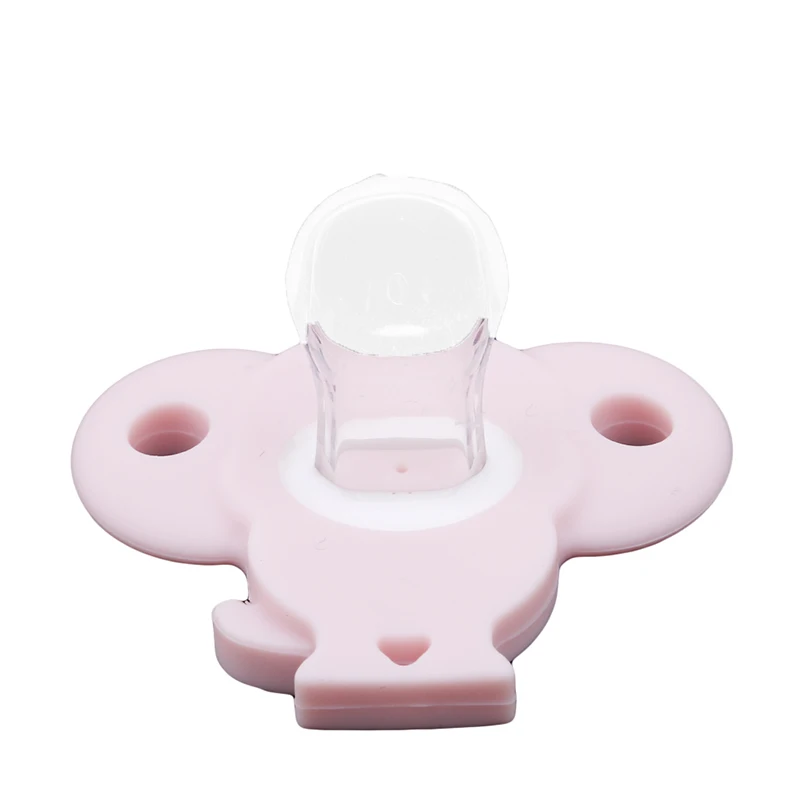 It was declared by the developers as “shaping the jaws”, in connection with which 4 sizes of this model were proposed to stimulate the development of the dentoalveolar system in children of different ages. Since then, the shape of the NUK pacifier has not changed. Currently, 3 sizes of pacifiers are produced in Germany.
It was declared by the developers as “shaping the jaws”, in connection with which 4 sizes of this model were proposed to stimulate the development of the dentoalveolar system in children of different ages. Since then, the shape of the NUK pacifier has not changed. Currently, 3 sizes of pacifiers are produced in Germany.
From an orthodontist's point of view, any pacifier or pacifier that is offered in pharmacies interferes with the development of the front teeth. This happens as a result of bite disengagement due to the weak but constant pressure of the neck of the dummy on the teeth of the frontal section. NUK pacifiers, like all other models, have a common big design flaw - a round and wide neck that interferes with the closing of the central incisors. The pressure of the neck of the dummy with prolonged use leads to the formation of an open bite in the anterior region, as well as to a violation of the development of the lower jaw. In addition, the incorrect position of the tongue can lead to the appearance of snoring in a child.![]()
Independently of each other, pediatric dentist Brockhaus and Prof. Rolf Hinz (Germany) thought about a new, less harmful shape of the pacifier, especially the shape of the neck, located between the aprons. As a result, a fundamentally new model of the pacifier was developed, which really contributes to the prevention of orthodontic disorders in children with milk occlusion. The new model, called DentiMaxx (Novatex GmbH, Germany), has a particularly thin neck and a special step for the correct positioning of the incisors. The new pacifier comes in 2 sizes - the first one is for babies up to 9-10 months, the second - for babies with already erupted teeth.
Today, the DentiMaxx is the best choice for reducing the risk of dentoalveolar anomalies. Flattened at the bottom and convex at the top, the wide head of the pacifier fits snugly against the palate when sucking, allowing the child to train the correct position of the tongue in the oral cavity, which contributes to the natural expansion of the arch of the upper jaw.